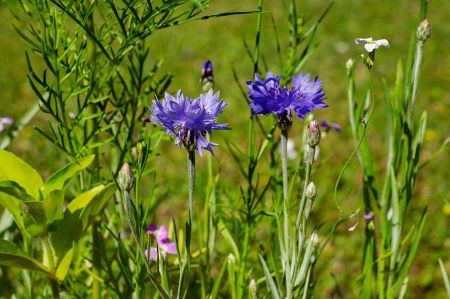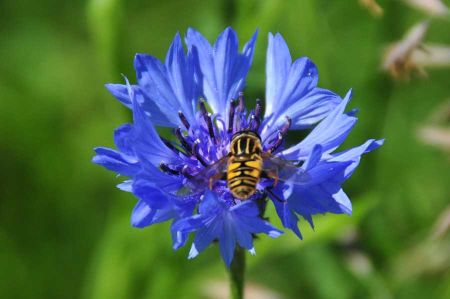Cornflowers - some color in the dreary gray days in December
- Written by Portal Editor
Looking outside at this time of year, it is mostly gray and rainy in the west of the republic, so it is important for us to add a little color just before Christmas, why not with a small article about the cornflowers that always met with us during the summer, often accompanied along the way, whether during the hikes or the bike tours.
Cornflowers with their blue to violet flower heads most of our readers should have met frequently, even though the plant seems to be unknown due to its botanical name Centaurea cyanus. And despite her rebirth in the past few years due to the untilled edge strips on the fields, it is still under nature protection. The cornflower, which is also used as a medicinal herb, can be grown in the garden or on the balcony with just little effort.
Origin and occurrence of cornflowers
The occurrence of the cornflower can roughly be summarized in Europe and West Asia. The plant with the striking blue flowers was probably introduced to Central Europe by people from the Mediterranean and has since spread continuously to the north and east.
The cornflower is often found near or on the edge of grain fields, which also explains its name. It primarily grows in locations that are open and rather poor in nutrients. Occasionally it can also be found wild on fallow land and in the wasteland.
Cornflower as a medicinal herb

In the herbal books of the Middle Ages, the cornflower was considered a universal medicinal plant that was used for both external and internal complaints. The main areas of application were poorly healing wounds, fever and poisonous insect bites from spiders or scorpions. In the book on medicine by Matthioli, the cornflower is also a tried and tested remedy for mouth rot. Crushed cornflower seeds are also said to have helped with eye disorders (red eyes), which were not specified, however.
The cornflower contains numerous remarkable ingredients that still warrant its use as a medicinal herb. The tannins, flavonoids, bitter substances and mucilages contained in the herb and flowers are particularly worth mentioning here. The composition of the active ingredients or the effects of the cornflower are used in folk medicine today for the following complaints and diseases:
bladder problems
slight kidney problems
indigestion
mild bile duct disorders
a headache
nervous restlessness
chronic cough
Conjunctivitis (conjunctivitis)
Inflammation of the eyelids (blapharitis)
Above all, tea extracts and tinctures are offered, and coverings are rare. As a rule, cornflower components are mixed with other medicinal herbs. For example, yarrow, centaury or peppermint can be added as ingredients for a tea against indigestion.
A more well-known application is the so-called blue-flower tincture, which is used primarily for restlessness, nervousness and to promote thinking. In addition to the cornflower blossoms, this tincture contains the flowers of thyme, lavender, hyssop and borage. The flowers are gently extracted in an alcoholic extract for about three weeks. In case of mental blocks, stress or even nervousness, up to 15 drops can be taken three times a day.
Cornflower in the kitchen
Cornflower blossoms are often used on desserts, cakes or wild herb salads. Cooks who value decorative look when arranging their dishes also use the flowers for cold dishes. The leaves, on the other hand, are not used because they are of no use for the kitchen due to their bitter substances and tannins.
Please read as well:
Poppy - almost extinguished and yet back on the fields edges
Bike ride across wetlands - poppy and cornflowers
-
-
-
-
-
-
https://www.alaturka.info/en/life/flora/4954-cornflowers-some-color-in-the-dreary-gray-days-in-december/amp#sigProId8e2010be43
